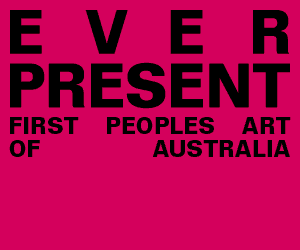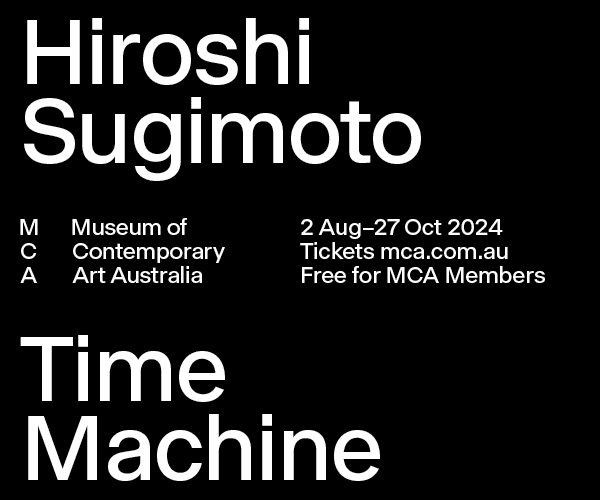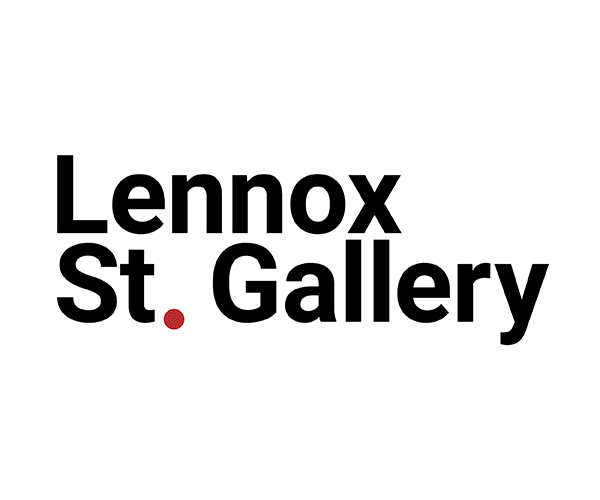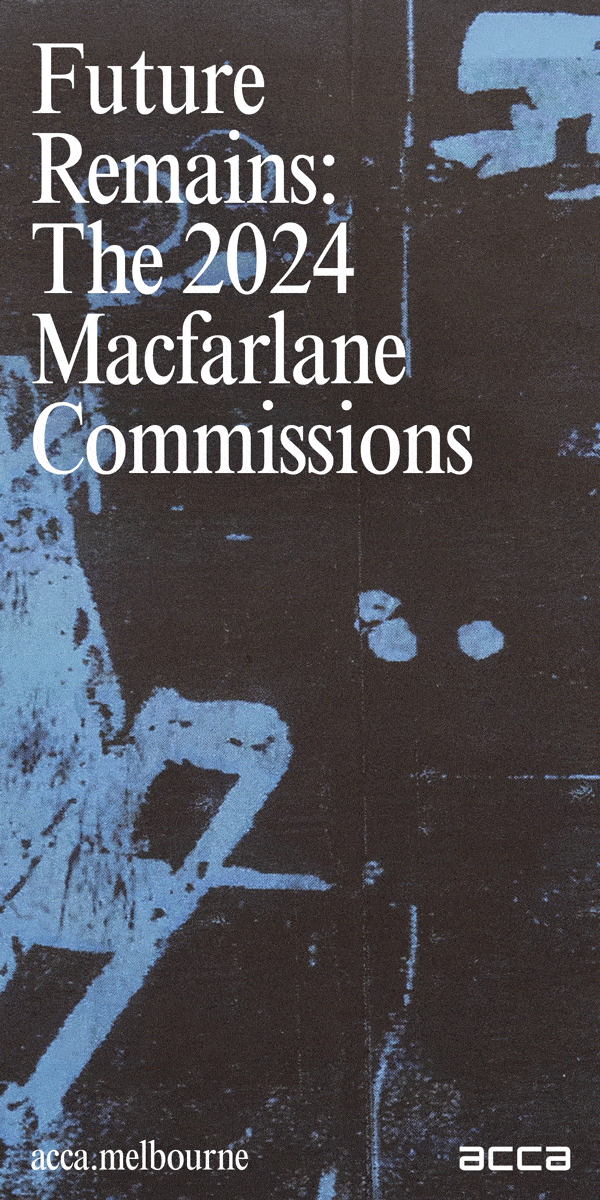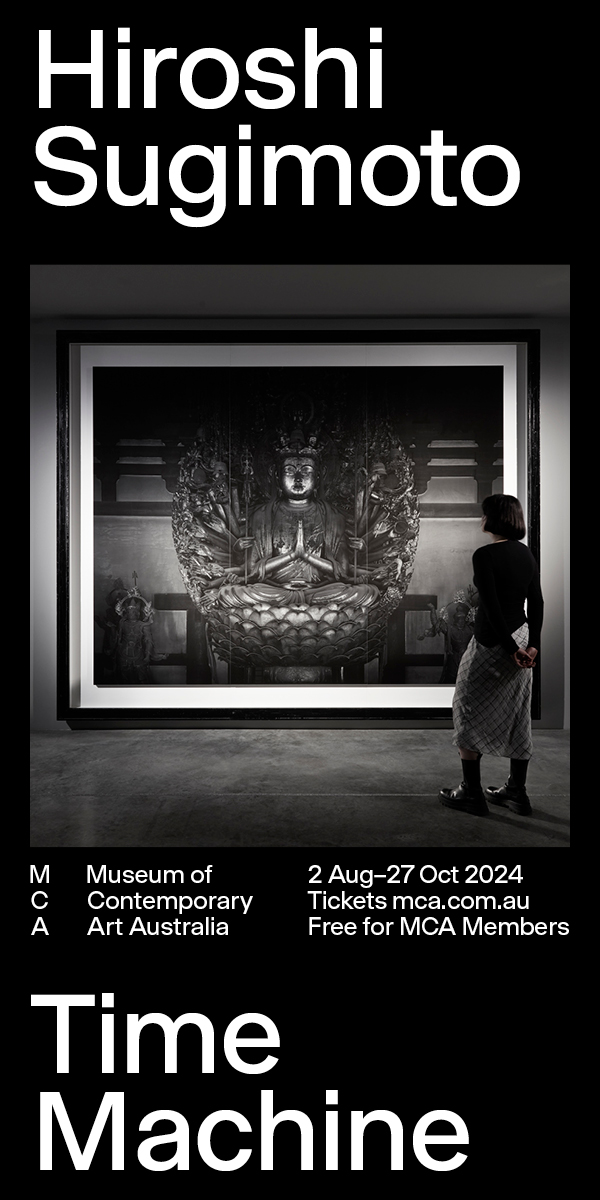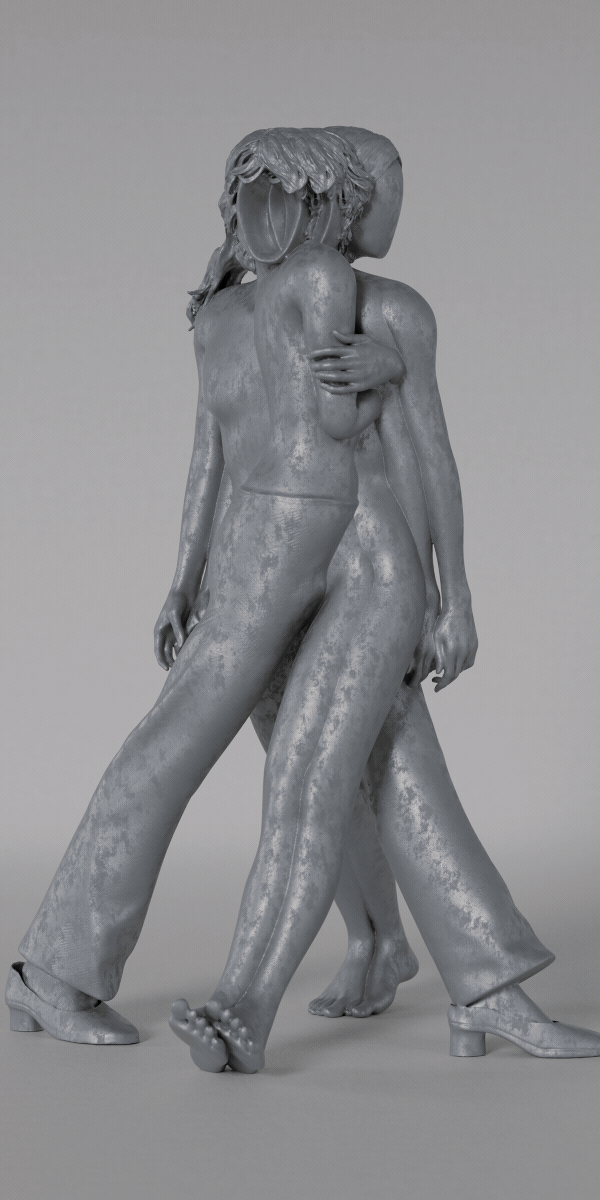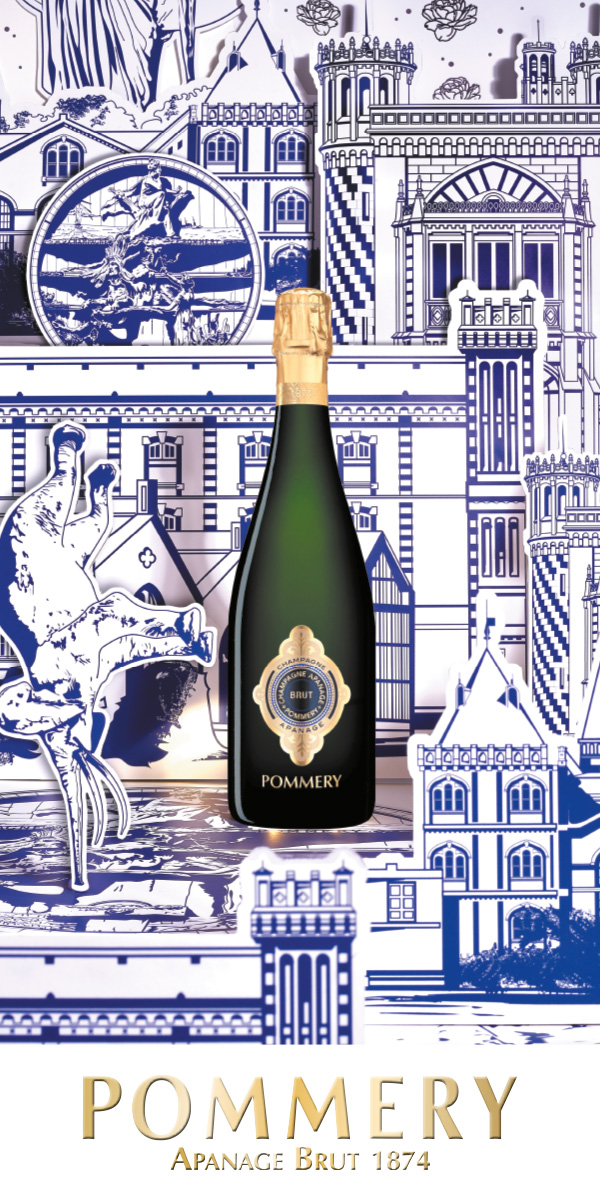Ross Taylor:
A Holiday in Dystopia
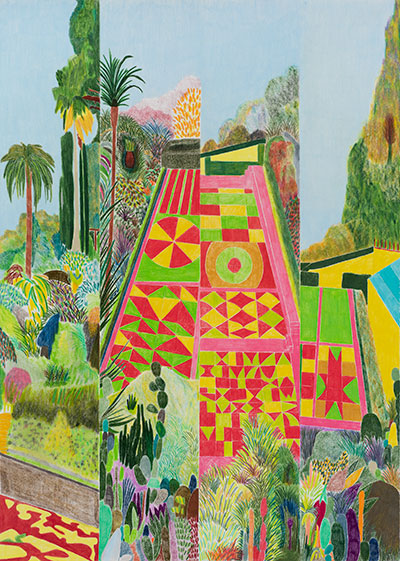
Image credit: Ross Taylor, Madeira, 2019, pencil on paper,
84 x 59cm, courtesy of Sophie Gannon Gallery and the artist.
Frame an energetic intensity within controlled parameters and you find both the artist and his work. Ross Taylor’s drawings, full of frenetic pencil marks and fragmented spatial construction, are produced in a steady flow of output and have been finding their way frequently and regularly into public, private and university gallery settings. Driving this pace of action is a wilful commitment to medium and a dissection of the leisure industry through image play.
“I stick with drawing”, Taylor explains, “because it stands up against any medium”. He is analytical about the process, medium and content, and it shows in the work. Whether in the evolving mastery of overlaying colours from rapidly worked pencil marks, or in content selection from constant research, Taylor’s work reveals a thinking through action. He applies parameters in his practice in order to evoke freedoms. “I primarily love the control that drawing affords me and yet the techniques that I employ open up a lot to chance,” he explains.
In July, Taylor exhibits his second solo show at Sophie Gannon Gallery in Melbourne, and in early 2020 he presents his first solo show at a public institution at Bendigo Art Gallery. In preparation for both shows he is producing dozens of drawings with hundreds of small lines and multiple layers of colour built up on the paper. The labour of his efforts brings a vibratory tone to the image and a density of archived energy. “There is nothing more boring than an easy drawing or painting,” Taylor declares, “I think it’s good for the viewer to see some remnants of the meat that’s been carved through.”
To achieve a register beyond the immediacy of aesthetic pleasures the artist delivers an astute reading of a sociological motif, drawn from source material harvested online. Associations of leisure manifested in a late-capitalist malaise appeal to Taylor. “I find the whole notion a curious topic. I enjoy the rules of presentation associated with the getaway; you can be on a floating vessel bound for Egypt and feel like you are in an adult utopian playground,” he explains. “I love the idea of the continental breakfast, the luxury fruit display, the temporary grandeur of it all.”
Through striated fragmentation of space Taylor tweaks these settings, amplifying colour saturation and pushing the comfort factor toward dissonance. In one work, we find ourselves looking into the appeal and repulsion of a late-night kebab shop. For Taylor this “highlights the tension between decadence and debauchery ... the sweaty, twirling monument that we gravitate towards when everything else is exhausted. It’s all a little ‘cologne and dirty underpants’, really,” a feeling reflected in cruise ship buffets and the ziggurat-like nightmare of baggage carousels.
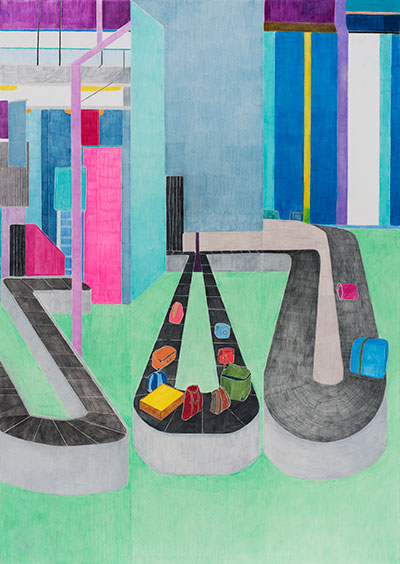
Image credit: Ross Taylor, Carousel No. 2, 2019, 118 x 84 cm, courtesy of Sophie Gannon Gallery and the artist.
It is this correlation between the nature of his imagery development and the nature of the content he chooses to investigate that sharpens the work and deepens the experience of consuming it. We are looking at eyeball-stimulating phenomena in formal compositions of high-end frequencies, as we comprehend a sensually evocative luxury in formalised platforms on the edge of collapse. A dissection of medium crafted through a dissection of content.
Taylor likes the challenge that comes from working this way. How the utopian ideals of his source material – cruise ships, airports, holiday parks, food courts – hover on the edge of imminent dystopian actuality stirs a set of guidelines for his drawings that allows him to push the work to a zone of oscillation and glitch. “The potential in the drawings lie in the problems that present themselves,” he says, “as the composition comes into fruition and how they are resolved or deliberately unresolved. The most successful works for me push the boundaries of difficult colour and spatial relationships.” His drawings revel in the immediacy of effect and yet supply a depth of value that rewards contemplation beyond impact.
There has been a turn toward increased scale with recent works, partly as a way of turning up the heat and enriching the flavour. But importantly for the artist, it sets a technical challenge that compels his engagement with process. The larger drawings “allow the work to occupy more of the viewer’s periphery, but” – he clarifies – “upscaling presents a new set of challenges that revitalise the process.” The mark making remains governed by the gestural limitations of his handling of pencils. The frenetic quality of small lines remains as the territory it covers expands.
Taylor’s connoisseurship of medium is refreshing and his love for it imbues his art with a passion. “Though drawing is often overlooked as preparatory for something else,” he says, “it addresses the same concerns as any other medium. There is less room for error and contemporary artists prove that there is still a wealth of possibility in this perceived-to-be traditional practice.” His work has increasingly been acquired by public and private collections: evidence of an enthusiastic embrace of the medium of drawing by consumers. But perhaps more importantly for the longevity of drawing, Taylor’s practice is evidence of its embrace by artists with conceptual concerns and process-oriented approaches to working.
Ross Taylor solo exhibition runs at Sophie Gannon Gallery from July 24 to August 10, 2019.
... Subscribe





